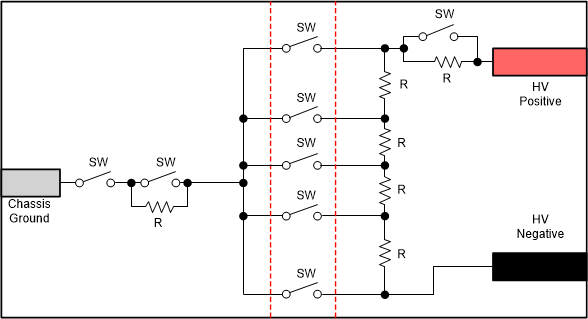JAJU528B August 2022 – January 2023 OPA388-Q1
- 概要
- リソース
- 特長
- アプリケーション
- 5
- 1System Description
- 2System Overview
- 3Hardware, Testing Requirements, and Test Results
- 4Design Files
- 5Software Files
- 6Related Documentation
- 7Trademarks
- 8Revision History
3.2 Testing and Results
Solid-State Relay test results are shown below original design testing see Solid-State Relay Isolation Tests.
Measuring system isolation is possible by breaking the isolation internal to this reference design. For this task, build a load card to simulate the isolation error in the system. This card typically consists of various high-voltage resistors and switches to simulate different error conditions (see Figure 3-5).
 Figure 3-5 TIDA-01513 Isolation Breakage Load Card
Figure 3-5 TIDA-01513 Isolation Breakage Load CardWhen building the isolation breakage load card, be sure to follow high-voltage class safety precautions and laboratory safety requirements. Choose the resistors (R) based on high battery voltage, power dissipation, and the testing targets of the system. Switches (SW) must withstand the open contact voltage and support proper insulation for handling the switches. Build the load card based on the resources available and number of tests planned. Users can also build the load card by using relays with external controls through a signal generator or software.